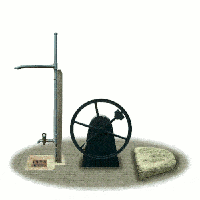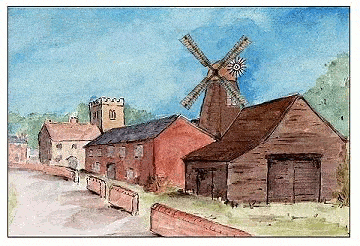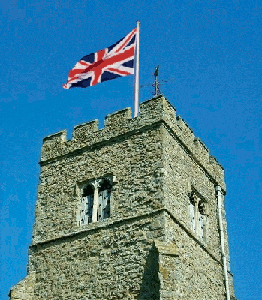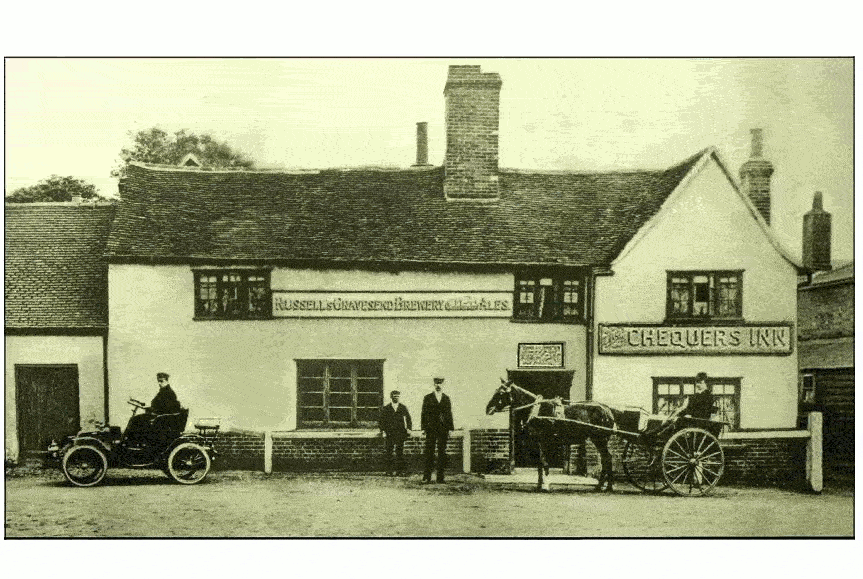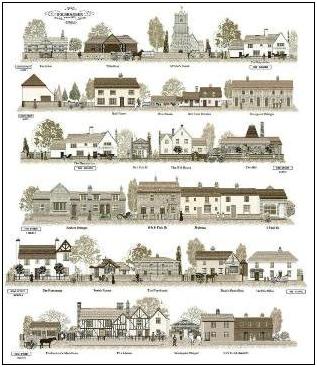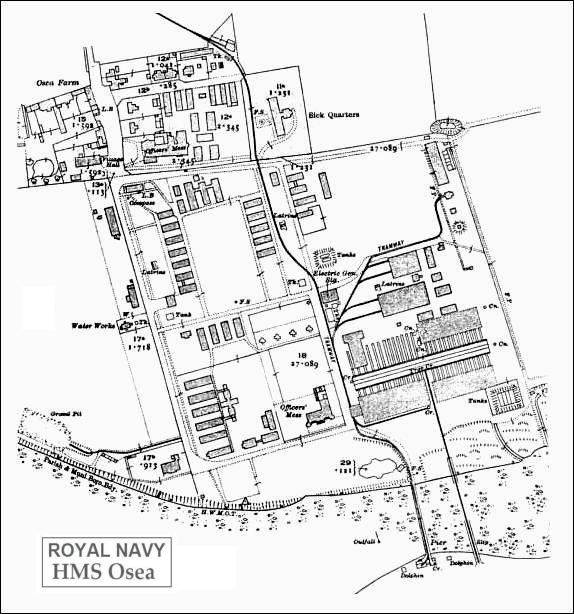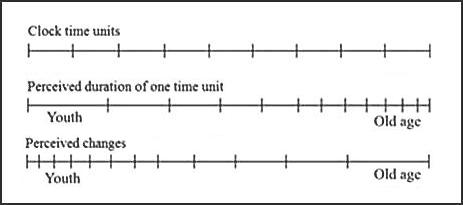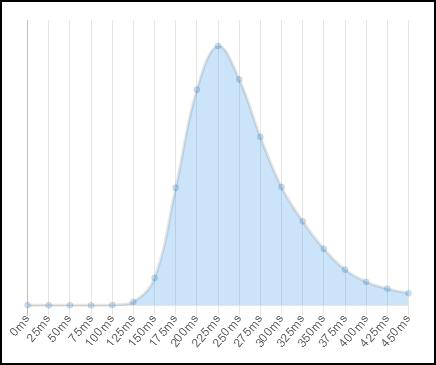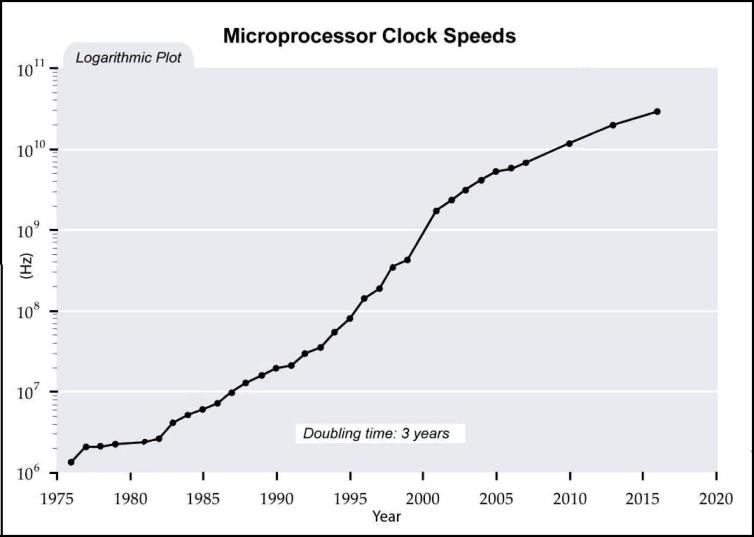this is a summary and a form of blog on the background to the website
and the archives...
|
contents |
||
|
Years |
||
|
- 1980s |
||
|
- 2000s |
||
|
- 2016 |
||
|
- 2018 |
||
|
- 2019 |
||
|
- 2022 |
- Facebook |
|
|
- 2025 |
||
|
( currently 12 A4 pages if ever printed! ) |
||
____________________
Where it all Started
An informal local history group was originally formed in the 1980s with two objectives: to preserve the documented and pictorial history of the village and to organise exhibitions with this theme. A paper based archive was maintained until the original archivist moved away from the village in 2005 and a full four draw filing cabinet was passed on. It was recognised at the time that electronic records had many advantages over the paper based archives: the material can be easily updated, much smaller storage space is required, copies can be easily made and distributed leading to increased availability and greater security. So a PC based archive was created, initially by scanning the most important items held in paper form. The paper archive has been kept however, and still grows as new paper material that is offered, is scanned but not destroyed.
An early decision regarding the storage on a PC was that no special software should be used, and only minimal features of MS Windows would be required to access the information, so standard file types only are used: JPEGs ie *.jpg for images and Sir Tim Berners-Lee’s internet language creation: HTML ie the *.htm file format for integrated text, images and hyperlinks for internet use. Both of these file formats are international standards and not the intellectual property of any comercial organisation. The more complex and non-standard features used within the HTML language have been avoided to hopefully circumvent possible software compatibility issues in the future, and to ensure that the material can be sensibly viewed with a range of browsers. In the early years approximately 80 CD copies were made and distributed to current and former residents of the village and copies were sent around the world. With hindsight, a log of the origins of all the material should have been maintained, but this has never happened either by previous local historian or the current incumbent, so it is frequently not possible to know the origin of items.
The availability of the digital material meant that presentations using a laptop and digital projector were much easier to organise than exhibitions, and over the years many local history talks have been given using the material. To give the scale of the amount of material held in the digital archive to date, it is estimated that if all the text and two images per page were printed on A4 paper it would be about 4000 pages of paper. A summary is at... Digital archive
____________________
Past Contributors
The archives have been greatly enhanced by contributions from past and present residents who have had an enthusiasm for our local history. Notable Dr. Salter, Miller Christy, The Revd Gardner, Maura Benham, Crawshay Frost, Cyril Southgate, Chris Thorby and Joe Canning and many others.
Please
see... The Goldhanger Historians
In 2009 a subset of the local Digital Archive was put onto the internet, and over the years the amount of material on www.churchside1.plus.com/Goldhanger-past has steadily increased as search engines have increasingly indexed all the material, and web-stats for the site indicate that the audience has steadily grown. The Site Map page gives an indication of the scale of material currently on the web, which is perhaps one tenth of the total material in the archive. The site has been created and maintained with freely available PC tools and no professional help.
In 2014 a short introductory video was put onto YouTube at... youtu.be/4dKrrNyhDug by 2020 it had been viewed over 300 times.
An enquiry to Plus.com in 2014 about acquiring more web-space for the site revealed that they longer offer web-space to new customers or any additional space to existing users. Although this site has not yet been over filled, it raised the need for an alternative longer-term plan and security with a diversity scheme. At that time the simple solution was to put a back-up copy of the site onto Dropbox (since removed), and a Google search did not find this directly, small gateways was be constructed on Google Sites at. . .
https://sites.google.com/site/goldhangerinthepast/
and https://sites.google.com/site/goldhangerhistory
but these also no longer work!
An attempt was also made to put a copy onto Essex County Councils www.essexinfo.net as the site offers free webspace to Essex based “community and voluntary groups”. However an enquiry to their support team on how to transfer the existing files resulted in a reply of: “your files are unsuitable for our site” with no explanation given. So a single webpage was created at www.essexinfo.net/goldhanger-history as a gateway with links to the plus.com site (and to the PDFs described below). The essexinfo site has since been replaced by an e-voice.org.uk site at...
e-voice.org.uk/goldhanger-history
A similar
attempt was made to put the files onto Google Sites but they also only allow new webpages to be
created using their special cloud based editor, which also would be a major
re-work for the 130+ webpages.
____________________
Goldhanger Past book
In mid 2016 a decision was made to revert to
the original technique of offering copies of the entire material to some members
of the history group. This time copies of both the website and the off-line Digital archive
were passed out to several members of
the group on memory sticks, which can now easily accommodate everything.
In another attempt to find a solution to a
permanent on-line home for the history files, the subject was discussed with
the Goldhanger parish magazine editors and they kindly offered to host a copy
on in their webspace. This has been updated several times and is available
at... past.goldhanger.org.uk
In mid 2016 a paper-back book was created
out of the existing web-based material. This was due in part to the knowledge that
there are some enthusiastic readers of the articles placed in the Parish
Magazine who can’t or don't ever look at the web, plus the increasingly
conviction that one day the website will cease to exist once it cannot be
supported or pay for in Plus.com (or any other) personal webspace. The book was
created in PDF format which is surprisingly easy to create, upload, access and read from Google Drive, and PDFs seem particularly
easy to access and read on tablets such as Ipads. A PDF version of Maura Benham’s book Goldhanger – an estuary
village has also been uploaded.
Cloud based folders cannot be found by
searches, however they can be accessed indirectly through the Goldhanger Past
webpages found by searching for: Goldhanger
past or Goldhanger history
It now seems that PDFs held on a free “cloud” site, plus locally distributed memory sticks with “everything” could well be the best long-term preservation of the material. PDFs seem now to be so prolific that is difficult to imagine that PDF readers and the files could one day disappear, even though it is a proprietary commercial format.
____________________
Google Drive
Many of the large files have been transferred to Google Drive as .PDF, .PPT, .JPG and .MP3s files to save space on the Plus.com site. The volume of material held on Google Drive in this form now exceeds the volume of material held in Plus.com. One can only assume that paid-for web space will disappear when payments stop, whereas free cloud space with will continue as long as someone accesses it.
However in 2021 Google seem to have made some strange decisions and changes to Google Drive facilities. Their free webspace on Google Sites has become more difficult to use and the editor has been dramatically modified and the memory space on Google Drive has “security changes” introduced that seem to cause most of the audio .MP3 files not to operate. Some have been deleted and some have had their security setting revised, with difficulty!
See. here for the Goldhanger Past backup on Drive and here for the Stand-alone version.
In 2023 the original Google Drive personal free space was nearly full so a second Google Drive account is now being used.
The folders containing Goldhanger Past files can be accessed from... Google Drive links
____________________
YouTube Videos
As YouTube goes from strength to strength under Google’s ownership it seems likely that all the videos are here to stay and are secure, so more local videos have been progressively added. 28 have been created by your local historian with over 4500 viewings to date.
There are also an increasing number of local videos provided by others and as of 2024 YouTube links.htm has links to a total of just over 80 videos and many hours of viewing! Videos taken by visitors with drones have become very popular and give an incredible view of the Creek and village from above, albeit with some intrusion of our privacy.
Goldhanger Past on Drive
In late 2018 a copy of the Goldhanger Past site was placed on Google Drive as .ZIP file as another form of back-up should Plus.com disappear for any reason. This has been kept it up.
The ZIP file is at... https://drive.google.com/file/d/1eKJHoZRdb0zL9Xl6qZHIcjNd2soAXgDO/view?usp=sharing
and there is a memory stick in the History
Group filing cabinet
that includes copies and the digital archive
See also the Stand-alone version below
____________________
Uncovering Ernest Mansfield's past was a particular milestone in terms of local history and the role of the internet is in itself of historical significance for the number of contacts established and information learnt over several years, so it is worthy of recording this as a webpage which is entitled: Mansfield’s past revealed.
____________________
Ellacombe Chimes Support
Another particular milestone has been the development of the Ellacombe Chimes Support website. This came about due to a contact made via our Bells of St Peters webpage from someone looking for advice on how to play the Ellacombe Chimes who could find no assistance elsewhere. The result is we jointly developed a new website dedicated to this subject. We have had many contacts through it and the work in ongoing.
____________________
In late 2019
the Bitton History
Group made contact though the Ellacombe
Chimes Support website with an invitation to assist in organising a
word-wide celebration of the 200th anniversary of the invention of the Ellacombe Chimes
which is to take plave in Jun 2021. As their team was not able to create a new
webpage with audio recordings the page was created within Plus.com web space
and linked into the Bitton History Group site.
The page is at... www.churchside1.plus.com/EllacombeAudios.htm
____________________
Facebook
Also in 2019 one was made aware of a Facebook group called Maldon and Heybridge Memories which has regular posts about local history, postcards and photos. This has provided the occasional Goldhanger and Millbeach image never seen before. One of the interesting aspects of Facebook is that no notice is taken of copyright and there are few credits to where material originates from and several postcard scenes of have posted of images clearly copied from the Goldhanger Past site. Plagiarism is the best form of flattery and it is a two way process. At the beginning of the COVID pandemic a Goldhanger village Group page was created and has proved to be very successful (not not normally a source of local history).
There are now several other FB groups covering local history all of which occasionally have interesting information. When and where relevant DN has replied to posts with a direct Goldhanger history interest and has added links to appropriate pages on this site.
____________________
A Stand-alone version of Goldhanger Past
A different version of the
Goldhanger Past website has been created for two reasons...
The existing version
at... http://www.churchside1.plus.com/Goldhanger-past/
...has evolved over the years into two parts: the primary web pages are
held on broadband supplier the plus.com site at no cost other than the line
rental and broadband access, but only 250Mb of storage have ever
been available. Some years ago when that limit was approaching,
selected files (ie .PDFs & large .JPGs) were moved onto Google Drive where
15Gb of memory is available for free, but Google have started to make regular
and complex changes to the "security" arrangements for these files which
has raised a question over the long term use of this "free"
memory space. Secondly, DWN and his computers and are all getting older and in
the future may not be able to cope with any major changes on the web and the
two suppliers on which this site is dependant.
The short-term solution has
been to create a new version that puts all of the webpages and
associated files in one place, which means it is much larger than the existing
plus.com version and is currently 830Mb (the plus.com version is currently
230Mb) so it can’t replace the existing plus.com version. The new “all-local
version” is on memory sticks in the history filing cabinet and on Google drive
in a .zip file at...
https://drive.google.com/file/d/1x2Yl959dL85scocYfys4jGJhCyKMls9q/view?usp=sharing
This version could have two
uses: as the basis of a replacement website for the plus.com site once its days
become numbered, or/and as a downloaded local version to run offline on a PC.
In both cases the starting home page is index.htm. This version will tend to be
behind the plus.com website and was most recently updated in July 2025.
Despite its name the
Stand-alone version does not have copies of all of the Goldhanger Past YouTube videos included in it,
as collectively this would be very large, difficult to copy and so far YouTube
seems to be the one place where files are least likely to be deleted by the
host platform, unless they break their rules.
____________________
Copyright Issues
Copyright has always been a subject of particular concern and is well worth of a mention here...
It is a complex subject and other than taking specific legal advice, the internet is the best source of guidance available. However, the web is dominated by USA copyright constraints (and threats), but USA law is different to UK and EU law, and in reality threats of legal action in the USA do not have great relevance in the UK, unless large sums of money are involved. UK copyright is covered by civil law, not criminal law, so the police are not involved. It is up to the legal representative of a copyright holder to pursue a potential breach. Court action is rare, and usually associated with the recovery of substantial profits made from major literary and music publications, and/or to block further publication that would substantially affect the holder’s income.
In the USA a copyright symbol © and a date was previously required to establish copyright. However in the UK and EU copyright is established simply by having the author’s name and a date in a prominent position, such as on the title page. The duration of copyright varies depending on the type of material, but is usually between 25 and 70 years after the death of the holder. Many commercial websites claim new copyright on ancient material when has been recently digitised, however this remains controversial and there is little evidence that it has been put to the test in a UK court.
Selling, broadcasting, and ‘giving away’ the copyrighted material of others is potentially a violation, but just ‘showing’ material to a restricted audience as in a presentation is most likely not to be a violation. “Fair Dealing” clauses of the UK Copyright Act provide many concessions for uses such as for: personal study, educational, charitable and news reporting. There are also concessions covering short extracts with acknowledgements.
The irony is when viewing images on a PC or other home device that have a message saying it must not copied under any circumstances, there will already a digital copy within the device. This is fundamental to the way digital devices work using the internet. One just has to find the file and move it to a permanent location thus avoiding making a copy! If historical material appears on more than one website it is quite likely to be out of copyright. Furthermore, should one ever be approached by one of the sites, one can respond that it wasn’t copied from their site.
A benefit of putting material on the web is that any offending material can always be removed after a complaint and many sites include words such as these:
“Acknowledgements for short
extracts and images taken from other documents are given in many places on the
site. Further acknowledgements will be readily added, or material removed, if
request by a copyright holder who has so far not been identified”.
Similar wording has been on the About page of this site for many years and so far no one has ever made contact on this subject. The recent proliferation of copied and copyrighted material in recent years on social media platforms would tend to indication that copyright issues associated with the web have all but disappeared.
In contrast, one needs to be extra careful when publishing and selling printed books as they cannot be modified or withdrawn so financial compensation could be demanded.
____________________
Development tools used
The Goldhanger Past website has evolved over about the last 16 years and the tools used to produce, upload and develop the site have changed very little over that time! The principle of “if it isn’t broken don’t fix” has and still is being applied, plus the experience and knowhow of the author, together with the well used and trusted devices, have continues to be exploited to the full.
The decision to use standard readily available software, international standard file types, and minimal features of MS Windows based applications has been adhered to throughout. They include:
|
MS Word |
creation and editing of HTM & PDF
files + the use
of tables, hyperlinks, links to images, etc. |
|
MS PowerPoint |
creation and edit of a few PDFs |
|
MS Excel |
creation and edit of some tabular
HTMs |
|
MS Wordpad |
for small/quick text changes to HTMs |
|
MS Paint |
for small/quick changes to image JGPs
|
|
MS Picture Manager |
for quick changes to JPG sizes,
tones, etc. |
|
MS Movie Maker |
creation of local videos held on
YouTube
& the editing of audio files |
|
Ulead Photo Express |
for general image JPG editing |
|
GIMP |
to correct perspective concerns in image JPGs
& the creation of moving
GIFs |
|
eDocPrintPro |
converts MS files to PDFs (acts as a print-driver) |
|
MS Exporer |
upload files to site using built-in FTP in MS
& Plus.com (FTP=File Transfer Protocol) |
Several on-line conversion tools have also been used over the years, notably:-
Optical Character Recognition (OCR) and video, audio and GIF file convertors
Some of the original images held in the paper archive and some acquired more recently were of poor quality and one has always the dilemma of how much editing to undertake before including an image on the website. Today one can see many early photos elsewhere on the web that have been dramatically “enhanced” to add colour and contrasting effects that obviously weren’t on the originals, and now AI tools are available that can be used for this purpose.
The policy adopted for this website however has been to use only the editing tools identified above (but not) in a constrained way to maintain the integrity of originals, while making images clearer and more pleasing to the eye, and for example to:-
Enhancement of a sepia colour if the original came from a time when sepia was normal
Removal of unsightly scratches, cracks and other marks obviously not on the original
Cropping to hide rough edges and to enlarge and concentrate on key elements of an image
Straightening up to making scenes and horizons horizontal
Improvements to brightness and contrast
Enhanced focusing of key elements within images
Enhanced features
Two enhancements to this website have been made in recent years that create “live” feel to the site are well worth a mention here, they are: the addition of “moving” .GIF files, and the addition of “interactive” pages enabling the user to select items or parts of a page and display more details.
A “Graphic Interchange Format” (.GIF) files contain a succession of still images that creates the appearance of movement and animation. They are relatively easy to create and edit locally with GIMP and online with ezgif.com, and take up much less space than a video file. Rotating objects and a succession of related images are idea uses. Here are some examples on this site...
|
|
|
|
|
|
“Interactive pages” have been created on the site by studying other websites and using similar techniques. Basically, a large image of a map (or other picture) is inserted into an MS table cell using Word and many small transparent .GIF boxes are inserted over the top of the large image. These GIF boxes are then used to create links to the details and other images. Here are two examples with links...
interactive village streets scenes HMS Osea -
interactive map
Artificial Intelligence
So far this author has only investigated the potential of AI to help maintain and enhance this site and also to prepare presentations, and has used it for example to establish historic dates and facts, etc. Of the several free variants of AI the two that have been used are ChatGPT and Google AI. They seem give slightly different answers but they also give website links for the sources of the information, so the validity of their answers can easily be verified.
____________________
Achievements
If the information was in a book it would have a beginning, middle and end. The web based version has a beginning, but one can so easily be diverted by the many useful links, so the nearest the reader may get to an identifiable end may well be when boredom sets in, or here at this page! Having reached this point, and you are satisfied that you have seen everything useful then congratulations! The email address on the About page has served its purpose well, as many contacts have been made with former residents and their relatives over the years, who have also kindly supplied much additional information.
Despite a natural instinct that the history of a small village must be finite, new information keeps appearing: new sources on the net, old books and newspaper articles recently digitised, old and different postcards continue to appear, another attic cleared, another book with local content to add to the virtual library, etc. Not least, recent local panoramic scenes and street scenes with recent street scene additions all too soon become part of our past. The nature of the information is also changing, in the early days the emphasis was on buildings, the environment, and early postcard scenes of the village. However the fascinating and inspiring stories about local people have grown in significance, and there seems no end in sight. Authors, Artists and Musicians from the past are of particular interest to historians as they have made a major contribution to our knowledge of the past, and their work is given greatly deserved prominence both on these web pages and in the archives.
One is tempted to identify the highlights of the past, and somehow indicate the relative importance of the material held, but professional historians would probably never do that, so nor should an amateur. However, clues are in the chosen layout of the site and home page, and committed surfers will notice the archivist's particular interest in local authors. One can't help having a special empathy with them through the combination of their words, their photographs and biographical details of them written by others. Furthermore, the ability of local authors, such as the Revd J C Atkinson, Ernest Mansfield, Lindsay Fitzgerald Hay, Maura Benham and Joe Canning to exploit the semi-biographical novel to reveal much about the places where they lived, their neighbours, and themselves is most notable. It is particularly perverse that Ernest Mansfield wrote (but attributed the advice to Dr Salter) that it would be “too egotistical” to write one's own biography, but then he effectively did so in his two books: Astria - the Ice Maiden and Ralph Raymond. So if he and others could be so bold, perhaps that principle can be adopted by this author here with DWN history and DWN career.
Crawshay Frost does not seem to have written a book (at least that we have yet found), but he did leave a legacy of many published letters, photographs, and newspaper articles (some attributed to others, but clearly heavily influenced by him), many with a local history theme, so that is more than enough to earn him the accolade of a Local author. We also know he make 35mm films and showed them in the Maldon cinema, but they have also not been found (yet).
Identifying highlights and achievements of these local authors using today’s technology is another matter. Uncovering Ernest Mansfield’s past is definitely high on the list, as is uncovering Crawshay Frost's past. There have been many other recent additions to the website, such as: Commercial Fishing, Chapel near Chappel farm, Frank Wellington, Maud McMullen, John Wilkin and more.
Today there is recognition that owners and holders of historical literature, historical buildings, works of art, etc. are but custodians of a heritage that needs to be maintained and passed on to future generations. Similarly, those who search out, catalogue and preserve our history are but custodians and facilitators of access to a heritage that could so easily be lost or overlooked. One has to ask who should undertake this role in a small village? Not it seems the nearest town museum or library, nor the county records office, even less the national libraries and archives. These organisations all have much grandiose objectives and a wider brief with limited resources. So it is up to enthusiastic local amateurs to take on and maintain this role locally.
Today this is increasingly achieved via local history groups on Facebook which is easy to use for those with very little I.T. knowhow, however, the material is simply held in the chronological order in which it was uploaded and has no other structure to it. So far, like Youtube, Facebook does not delete anything and previously uploaded material can be found with a Facebook search. However, Facebook’s search mechanism is not so comprehensive as Google’s.
____________________
Future Directions
Historians and archivist inevitably develop eyes to the future, as they come to realise that the largest audience for their work is not their contemporaries, but those who will study their efforts in the generations to come. Maura Benham's Conclusion on page-79 of her book Goldhanger - an Estuary Village written in 1977 was clearly not intended for the benefit of the residents at the time.
Henry Ford is often quoted as saying: “history is bunk”, however what he actually said was printed in Chicago Tribune on May 25th, 1916:
I don't know much about history,
and I wouldn't give a nickel for all the history in the world. It means nothing to
me. History is more or less bunk. It's tradition. We don't want tradition. We want to
live in the present and the only history that is worth a tinker's damn is the history we
make today.
So although he expressed no interest in history as it affected his business at the time, he certainly wasn't averse to creating and recording his own version and piece of history, which he did most successfully in part by creating his own museum and historical village in Dearborn, Detriot. Perhaps every historian is subconsciously doing just this by collecting and recording information about the past and at the same time recording some information about the present and a little of themselves. However...
There is little we can know or do about The Future, only plan, predict, and hope.
The Present is infinitesimally narrow. In computer terms it is just a fraction of a second and by the time this sentence has been typed it is already a piece of the past in electronic terms.
This leaves predominantly The Past, whatever the timescale, be it of events of one week, one year, or hundreds of years ago, and without memories in some form or other we are lost.
However, a famous Quote from A.A. Milne’s Winnie the Pooh seems appropriate here...
“What day is it?” asked Pooh,
“It’s today,” squeaked Piglet,
“It’s my favourite day,” said Pooh.
In 2020 Captain Sir Tom Moore famously said: tomorrow will be a good day
But for amateur historians today is probably the favourite and best time...
Search facilities are better than they have ever been
New information and material continues to appeared
Archiving, presentation and graphic facilities continues to improve
The work is unfinished and there is always more to do
Paradoxically the greatest leap forward in acquiring and accessing local history has come about through computer technology, which could never have been foreseen by any of our past authors and historians. Fortunately their chronicles can, and are now, being recovered, preserved and distributed with the technology. One of the advances now available to us is the ability to convert handwriting into machine readable text with an online App., and this has been used to convert Janet White’s 1980s Study of the Chequers Inn building.
For the historian, the collection and worldwide distribution of material via the internet is just as significant as potential future readership. From the statistics available we know that there are far more visitors to this site from outside the village that from within it. This encourages further development of topics that are of particulate interest to those from afar. These are perhaps relatives of those in the village, people who once lived here, or those who have just visited or plan to visit the village. Web stats tell us which pages have been most accessed over the last few years and are, in order of popularity: The Great War, The Chequers history, Spitzbergen, Salt Extraction, Smuggling, and Panoramic Scenes, all of which would be of interest to non-residents and the increasing number of “tourists” that visit our village.
Here is one newer technology provided for the visitors to the village: QR codes (Quick-Response codes) are two-dimensional matrix barcodes that are increasingly used in newspapers and adverts and have found a role here. Small cards with the QR codes have been placed in the Church porch and in the Chequers entrance hall that take the visitor straight to the appropriate Goldhanger-Past webpages.
____________________
Parish Magazines Contributions
In 2014 when the editors of the parish magazine
changed and an invitation was accepted to provide regular one-page history
articles for the magazine together with front cover historical images. This has
continued and to date well over 100 articles have been supplied.
The local history articles regularly placed in the Parish Magazine has become popular and significant as not everyone wants to use the internet. Between 2014 and 2025 over 120 articles and cover photos have been published. All the back issues of the magazine are available on the PM's site here, but they are very large files and include all the adverts, so all previous history articles are also available on this site here together with a contents/index listing for quick reference.
____________________
Future Technologies
Maybe we should ask what future technologies might there be to further improve our knowledge of the past and improve its distribution. The web continues to change and evolve, plus we need to be aware of the current technologies that we are using and relying on that may well disappear! Search engines have dramatically improved since this website was first created and will continue to do so. Searching the web and searching this site is now so easy and effective despite the volume of information that exists. Home devices have become much more portable and internet access at historic sites and everwhere else has become the norm, and most people now have mobile phone with internet access. More computing power and more storage to hold even greater volumes of information is inevitable.
Perhaps we will all soon be able to have an Alan Turin style Artificial Intelligence (AI) conversation, in which our past local historians and authors will recall their experiences based the material in the archives in such a way that is indistinguishable from today's videos.
Maybe an increasing number of Ernest Mansfield's scientific predictions in Astria - the Ice Maiden will come to fruition and his ‘telepathy receiver’ will enable those who wish, to enter the world of the Cyborgs and go back in time using AI to observe past events, accompanied by the local historians.
The futuristic and idealistic ideas that Edward Howes shared with John Winthrop may become increasing relevant. We know that their interest in engineering, alchemy, alchemism, religion, and their quest for Utopia were also shared with, if not learnt from, Lucasian Professor Sir Isaac Newton who was their Cambridge University contemporary. They were seeking the perfect world, and one has to concede that whatever today's troubles, the world is nearer achieving their goal. The digital era, based on mathematically pure ones and zeros which can be independent of any physical form, which is the basis of web, provides some of that mechanism reaching towards the Utopia that they desperately sought. Namely: Worldwide communications, access to knowledge, education and health benefits for all, three dimensional moving images, and a means to save our past for perpetuity. Despite some using the web for anti-social and undesirable activities, in general it has to be a powerful force for good rather than evil.
The technology surely has the potential to preserve our souls for eternity as Howes and Winthrop and many others have sought in the past, and many groups are now working towards it. Already we can do much more than leave a diary, a biography and a stone in the graveyard, so one thing seems certain - whatever and wherever it is, that mechanism will be easily found with a search.
Quotations from another and much more recent Cambridge Lucasian Professor, the late Stephen Hawking seem appropriate here. Only he could give a book the title of: “A Brief History of Time”...
We are all connected by the Internet like
neurons in a giant brain.
Never give up work; it gives you meaning and
purpose; life is empty without it.
Look up at the stars and not down at your
feet.
The past, like the future is indefinite.
____________________
Time and Space
That brings us
to some observations on the changing passage of time and space as it affects
this project...
In his 1915
publication The Theory of Relativity Albert Einstein revealed
that time is not as fixed as it was previously thought to be. The Space-time theory
tells us that time is linked to movement through space and is effectively a 4th
dimension. It has now become clear that there are several earthly and computer
effects of the changing passage of time and space that affect our local history
research...
The changing perception of time
on us mortals...
The sensation
and experience that time speeds up as we grow older is, and has always been
difficult to accept, and in the past has been seen as one of life's mysteries. Recent
research however reveals that our brain's internal clock definitely does slow
down with age. A major effect of the aging process is that our metabolism slows down,
as does our heart rate, breathing, hearing, sight and ability to recover from
injuries and wounds, etc. It has the effect of the pace of life appearing to
speed up as we get older.
This phenomenon
is clearly real, and is emphasised by a comparison to young children. Today
they are introduced computer games on tablets and other devices at a very early
age, and are encouraged to react to the moving images as quickly as they can.
This hones and develops their thinking and reaction times to a level not seen a
generation or two ago.
The changing perception of time
in computers...
A consolation
for us is that for a variety of reasons a computer’s speed also deteriorates
with age and they also slow down. Added to that, each new generation of
processors perform considerable faster than their predecessors due to
technological developments and market forces. The effect is similar to the
effect on humans: older computers struggle to keep up with pace of the changes
in the computing world and the internet.
The changing perception of time
over our history...
A glance at the Events page on
this site shows that the rate of growth of information about the village past
over time has increased exponentially. Although we know something about the
events that happened 1000 years ago, it is very little compared with what we
know and have recorded about events that have taken place in the last 10 years.
Today, we learn something about our immediate past almost daily!
Can we quantify these timing
effects? ...
A study of charts
available on the web demonstrates how significant the effects are. The effect
of aging on humans has been nowhere near as dramatic, but is significant as
these charts from the web show...
this chart indicates that our brains could slow
down by a factor of 4 or 5 in our lifetime
and this chart indicates that the effect could be
far more dramatic
These two charts
do not give hard figures or ratios between the young and old because there is
known to be a wide spread in individual reaction times as we get older. However
one’s own reaction time can easily be measured using internet based tools such
as humanbenchmark.com and
in faculty.washington.edu.
Stats are also available showing the spread...
spread over the population spread across
age
The speed of
operation of computers over the last 40 years has been dramatic, doubling every
3 years...
So what can we conclude from this study
of time?
- We are all slowing down with age, but fortunately
not by as much as one might imagine,
the effect is no more severe than the
natural spread of reaction times across the general population
- Over time computers are speeding up by far
more than one might imagine
- Future generations of humans will be able to
react much more quickly and will cope
- These effects make it difficult for the
current generation to cope with the amount of information available
- Upgrading one’s computers may make it harder
to use of the increasing volume of information appearing
- As time passes we are more likely to uncover
additional recent history rather that ancient history
Then there is
the space
aspect of the Spacetime theory, and
in this case the earthly aspect of space
for humans, computers and history is of course memory space and capacity. At first
sight the effects of changing memory on humans and computers over time seem
remarkably similar to the changing effects of time studied above.
The changes in the human memory over
time...
As our brains
age our short term memories deteriorate, however we continue to remember our
early days. It is said that there is a computer memory analogy here: our
ability to write new information diminishes but we can still read the old
stuff. There is also a computer analogy and explanation for why some people
have much better memories than other: we all have much greater memory capacity
than most of us ever use and some manage to use much more of it.
The changes in computer memory over
time...
Again, a study of charts available on
the web demonstrate very well the effect of computer memory growth...
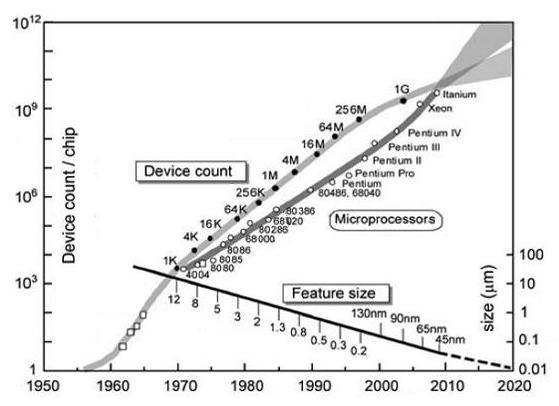
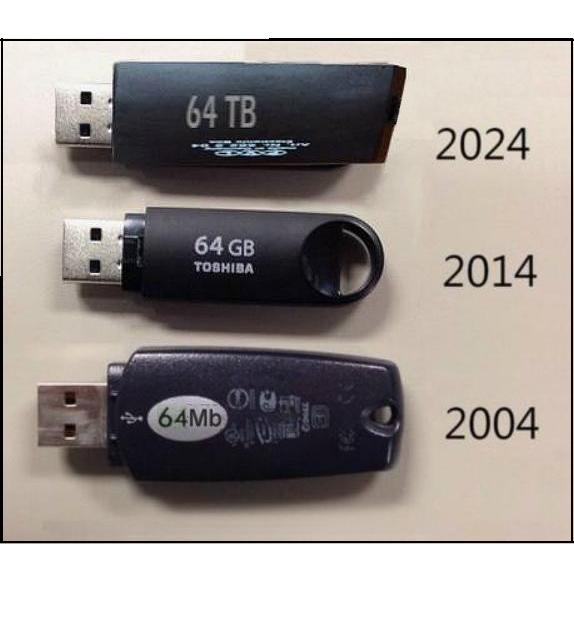
The most
dramatic growth in computer memory has been online with ‘cloud storage’ being offered
by the major IT companies, much of it being virtually free. It is hard to
difficult to know how much capacity they have and what it costs them, but this
graph of free YouTube uploads ever minute gives clues...
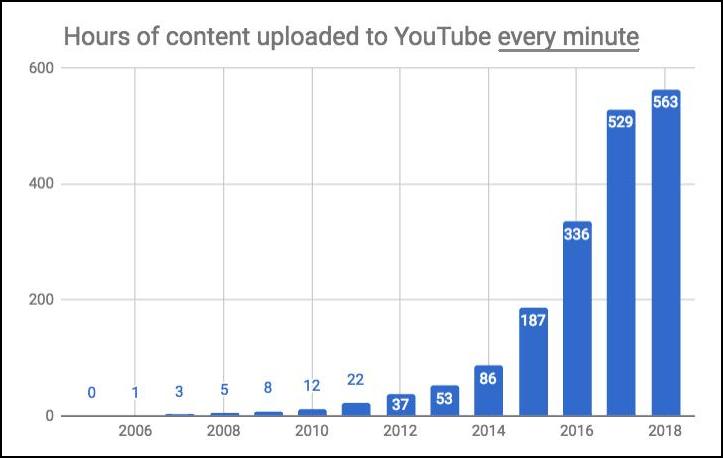
So what can we conclude from this brief
study of memory
space over time?
-
as our own memories deteriorate with age, digital memory is dramatically
growing and is freely available
-
as we become more dependent on digital memory, finding what exists
becomes more of a challenge
-
familiarity with local and online search facilities is becoming more
important. One could try these...
with Goldhanger Past’s key to the cloud
opened then use Search in Drive or browse
or search for local history on the web, again for images, for the Estuary, and
again, etc.
The End of the Journey?
Are we then anywhere near the end of this long local history journey? Clearly not - there will always be more to discover, record, distribute and broadcast. A glance at the About page demonstrates the degree of chance and shows all the recently added new pages. The Site-map shows the scale of the material held on-line. Digital archive gives the scale of the material held in the off-line digital and paper archives plus the number of web pages online, and sadly the local Portraits continues to grow.
In 2020 we celebrated the Victory in Europe, see:- VE-75. In 2022 the village celebrated Queen Elizabeth II’s 70th Jubilee with much enthusiasm, and in 2023 the village celebrated the coronation of King Charles III. In December 2023 we had the Advent Calendar windows display and in 2024 we looked back to Goldhanger’s involvement with WW-2 with the D-Day 80 event in the village Hall and the VE-Day 80 activities in the village in 2025, together with several more notable events. It seems there will always be more to add, and our local history continues to accumulate.
Now we are rapidly moving into a world of AI which it seems is being used everywhere, particularly on the web so it cannot be ignored.
Goldhanger, July 2025
top home about The Goldhanger Historians DWN art DWN past DWN's career
